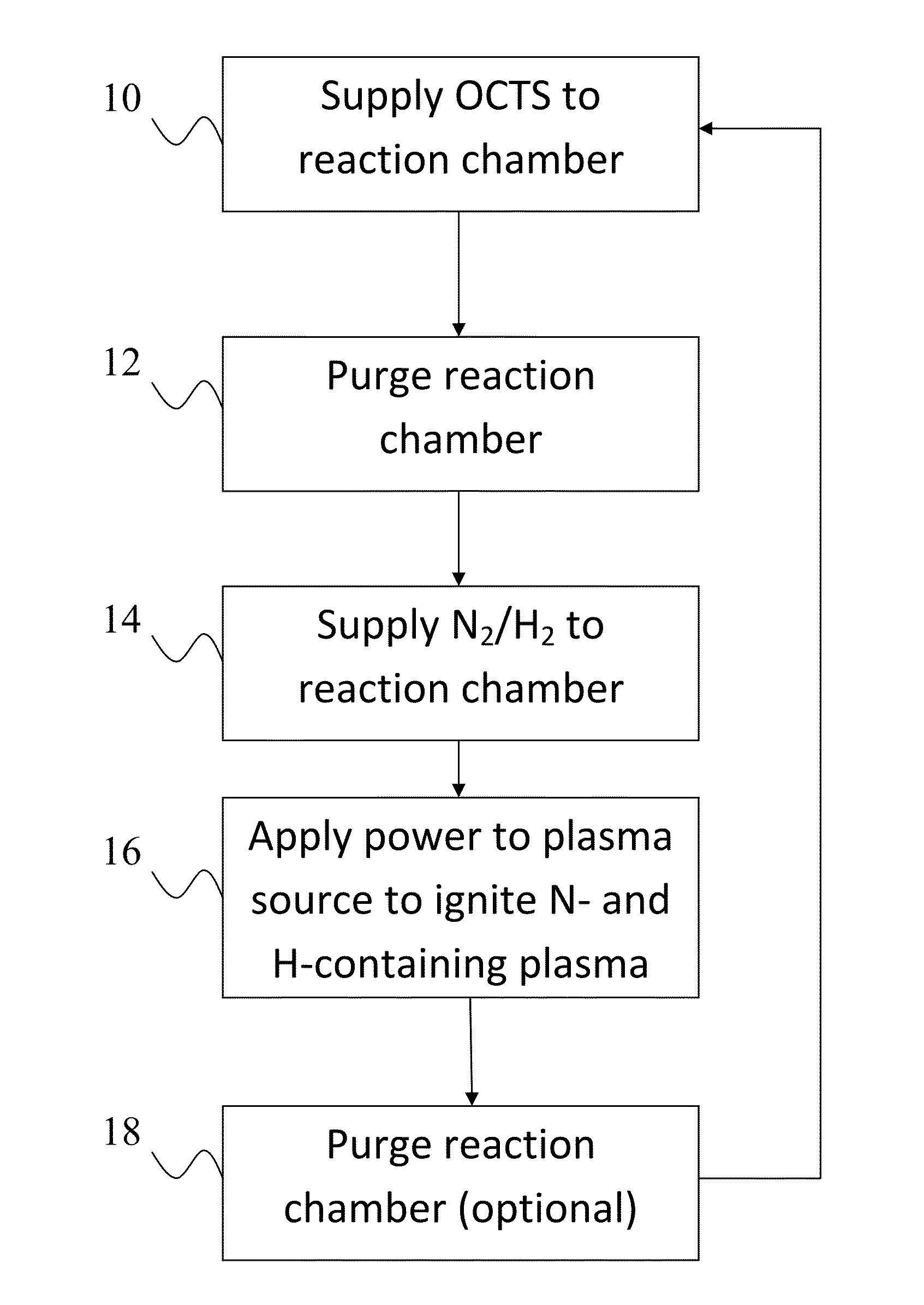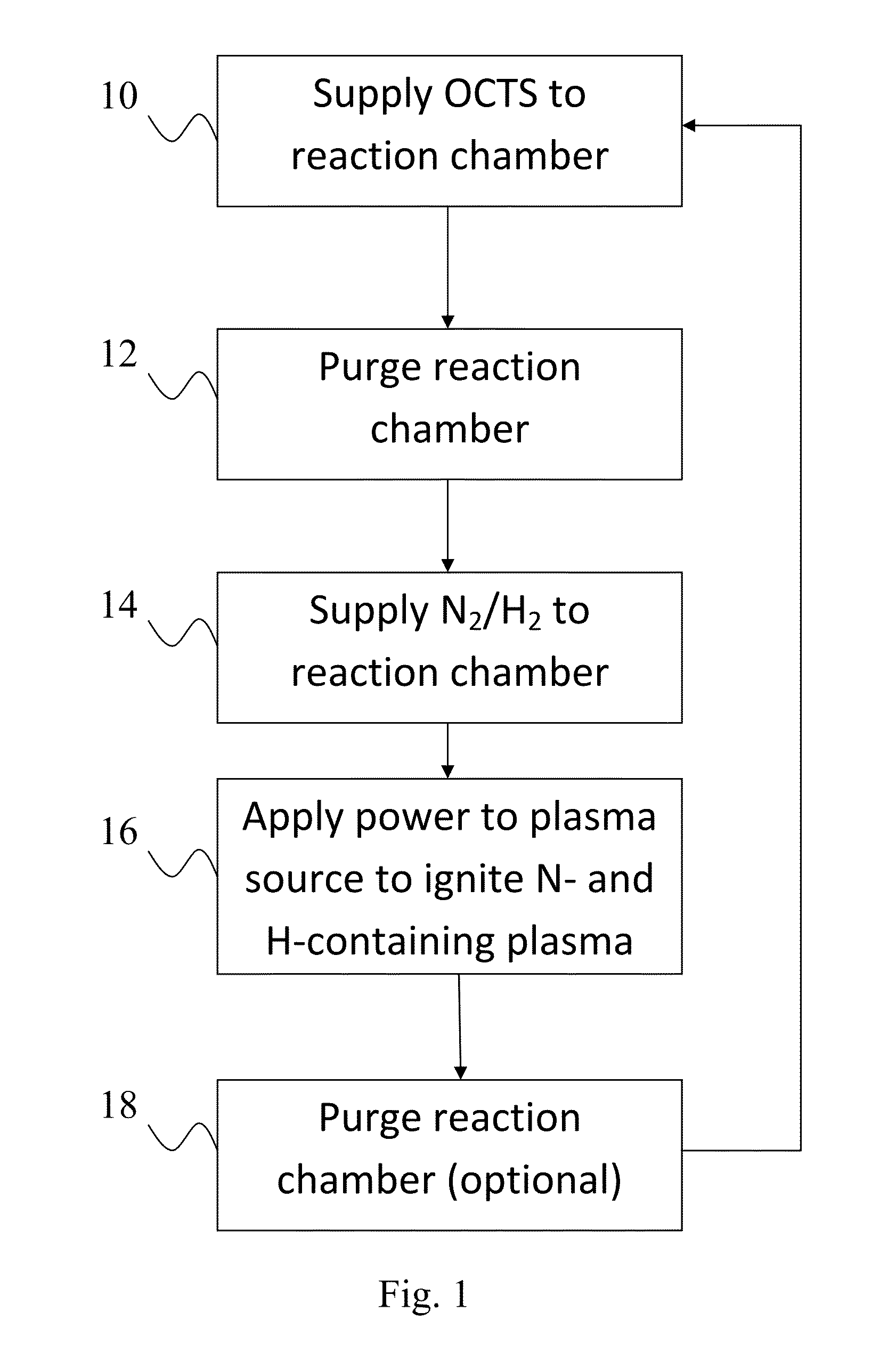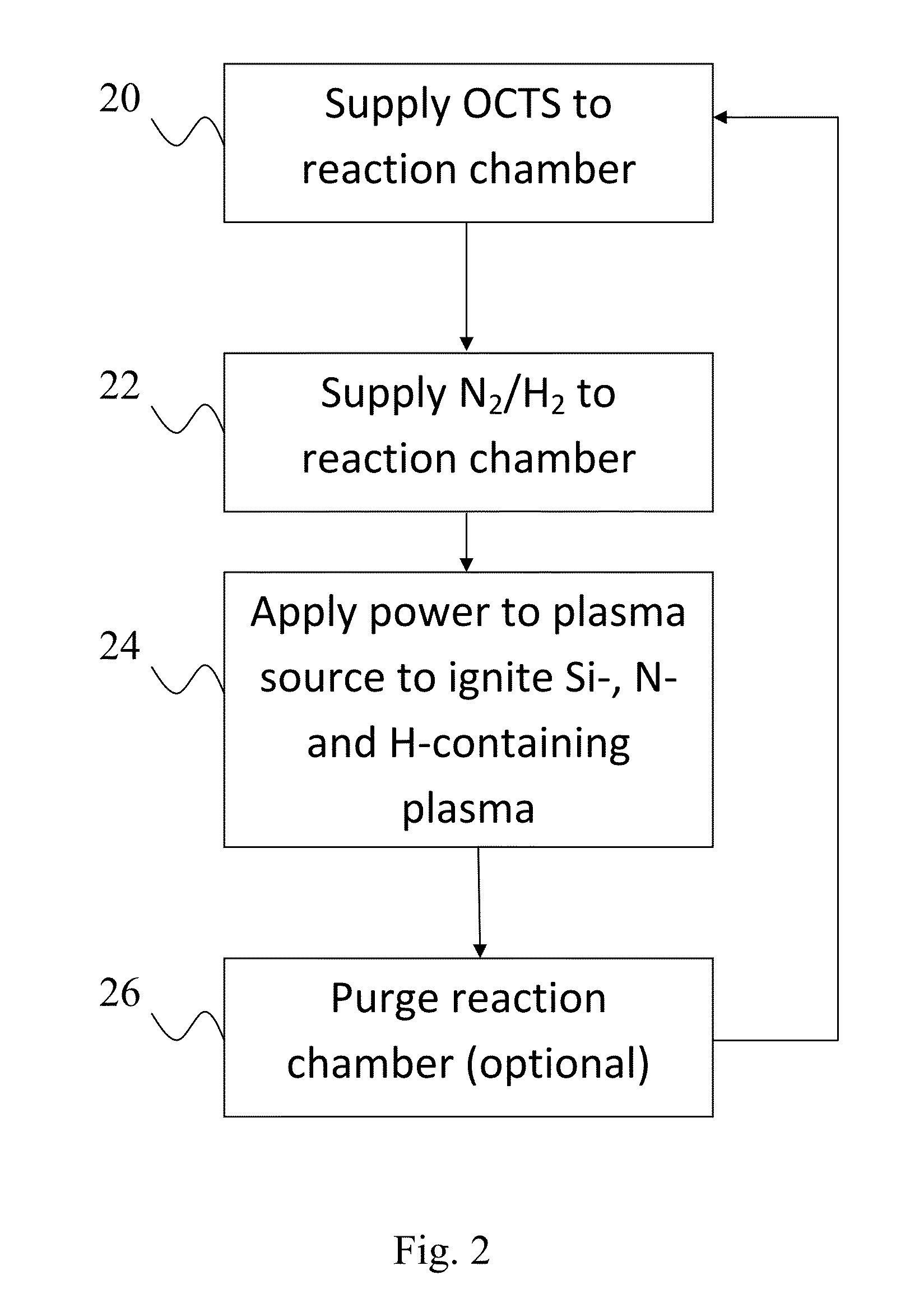Methods for forming silicon nitride thin films
- Summary
- Abstract
- Description
- Claims
- Application Information
AI Technical Summary
Benefits of technology
Problems solved by technology
Method used
Image
Examples
Embodiment Construction
[0020]Silicon nitride has a wide variety of applications, as will be apparent to the skilled artisan. Silicon nitride thin films can be deposited on a substrate by plasma-enhanced atomic layer deposition (PEALD)-type processes. The thickness and composition of each of the layers can be controlled to produce a SiNx film with the desired characteristics.
[0021]ALD type processes are based on controlled, self-limiting surface reactions of precursor chemicals. Gas phase reactions are avoided by contacting the substrate alternately and sequentially with the precursors. Vapor phase reactants are separated from each other in the reaction chamber, for example, by removing excess reactants and / or reactant byproducts from the reaction chamber between reactant pulses.
[0022]The methods presented herein allow deposition of silicon nitride films on substrate surfaces. Geometrically challenging applications are also possible due to the nature of the ALD-type processes. According to some embodiments...
PUM
| Property | Measurement | Unit |
|---|---|---|
| Temperature | aaaaa | aaaaa |
| Temperature | aaaaa | aaaaa |
| Temperature | aaaaa | aaaaa |
Abstract
Description
Claims
Application Information
 Login to View More
Login to View More - R&D
- Intellectual Property
- Life Sciences
- Materials
- Tech Scout
- Unparalleled Data Quality
- Higher Quality Content
- 60% Fewer Hallucinations
Browse by: Latest US Patents, China's latest patents, Technical Efficacy Thesaurus, Application Domain, Technology Topic, Popular Technical Reports.
© 2025 PatSnap. All rights reserved.Legal|Privacy policy|Modern Slavery Act Transparency Statement|Sitemap|About US| Contact US: help@patsnap.com



